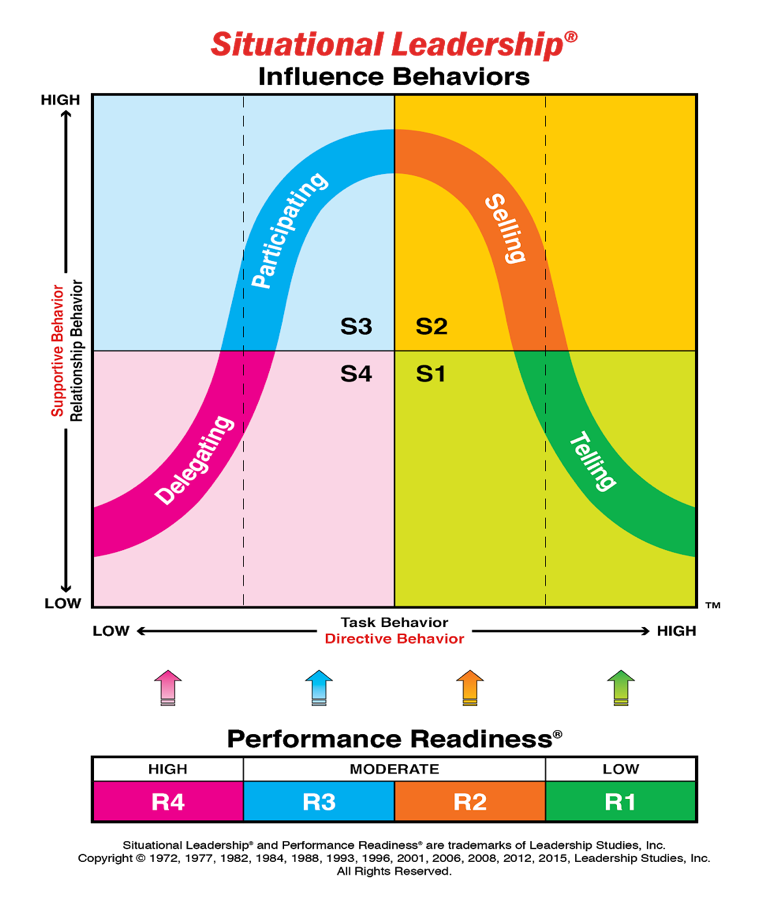There are four basic leadership styles in an slii® approach to leadership: Focuses on followers, rather than wider workplace circumstances.

Situational Leadership II Model & Theory
Features of the situational leadership model the situational leadership® model is sophisticated.

Blanchard situational leadership ii. Situational leadership ii is a process for developing people by providing effective leadership over time so that they can reach their highest level of performance. Situational leadership theory, or the situational leadership model, is a model created by paul hersey and ken blanchard, developed while working on management of organizational behavior. In the late 1970s/early 1980s, hersey and blanchard both developed their own slightly divergent versions of the situational leadership theory.
The starting point for the review is this edition. 2 3 goal setting 1 aligning on what needs to be done, when diagnosing collaboratively assessing an individual’s competence and commitment on a specific goal or task matching using a variety of leadership styles, comfortably, to provide individual’s with what they need three skills of a situational leader alignment The app can be used at critical moments, allowing managers to quickly diagnose an employee’s leadership needs for a specific task.
The theory behind situational leadership is more closely tied to using the style needed to be successful given the existing work environment, or the specific needs of the business. With slii, managers and direct reports learn how to speak a common language that builds trust and a sense of partnership. Ken blanchard’s situational leadership ii measures project team member development using competence and commitment as two parameters.
Take for example the new employee at the front desk, with an older supervisor. Its notable features are briefly that the model: Help the leader provide team members with the leadership style response they want.
This is the theory behind the concept of situational leadership. Enthusiastic beginners need a directing style. A leader’s primary concern lays with the task delivery and less with the personal needs of the subordinates.
Directing, coaching, supporting, and delegating. Typical behaviour for a s1 leadership style, according to hersey. Learn how managers connect with their people using a situational approach to leadership.
Developed by paul hersey and kenneth blanchard, the model is also referred to as the situational leadership model. Taking a situational approach to management. The effective manager is able to utilize multiple leadership styles as conditions change.
From delegating behavior to supporting behavior, to coaching behavior to directing behavior, and if paired correctly, with the right person(s) there can be positive outcomes. Asserts that leaders should change their behaviour according to the type of followers. Then, it provides the corresponding conversation guides to quickly prepare managers for a productive discussion.
In 1985 kenneth blanchard introduced situational leadership ii also called the sl ii theory in the book ”a situational approach to managing people”. The last posting, situational leadeship ii model, part 1, introduced ken blanchard's situational leadership ii model, four leadership styles, and the importance of matching your leadership style with an employee's developmental level on a particular task. The situational leadership model has two fundamental concepts:
More recently, the two companies sued each other over the right to use the “situational leadership ® ” name. Ken blanchard, one of the most influential leadership experts in the world, is the coauthor of the iconic bestseller, the one minute manager, and 60 other books whose combined sales total more than 21 million copies. In these six conversations, situational leaders use the three skills of slii to align on goals, development levels, and leadership styles.
These correspond with the four basic development levels: It is important to consider that groups and individuals may require different approaches when using hersey and blanchard's model. Summary directive and supportive behavior leadership variables situational leadership ii model.
Situational management theory was developed over several stages. Situational leadership® theory is commonly shown as classifying followers according to a 2x2 matrix, using the highs and lows of two criteria, thereby giving four types of follower groups. The s1 leadership style in the hersey and blanchard situational leadership model puts a high emphasis on directive behaviour and a low emphasis on supportive behaviour.
It was agreed that after the year 2020, the center for leadership studies would continue to use the situational leadership ® name, while the ken blanchard companies would have to refer to their model as just slii ®. The theory was first introduced in 1969 as life cycle theory of leadership. His groundbreaking works have been translated into more than 27 languages and in 2005 he was inducted into.
According to blanchard’s situational leadership ii model, there are 4 stages of behavior. Developed in blanchard’s1985 book, leadership and the one minute manager, (coauthored with patricia and drea zigarmi) and now widely used in corporations, private industry, and. Leadership style and the individual or group’s performance readiness level, also referred to as maturity level or development level.